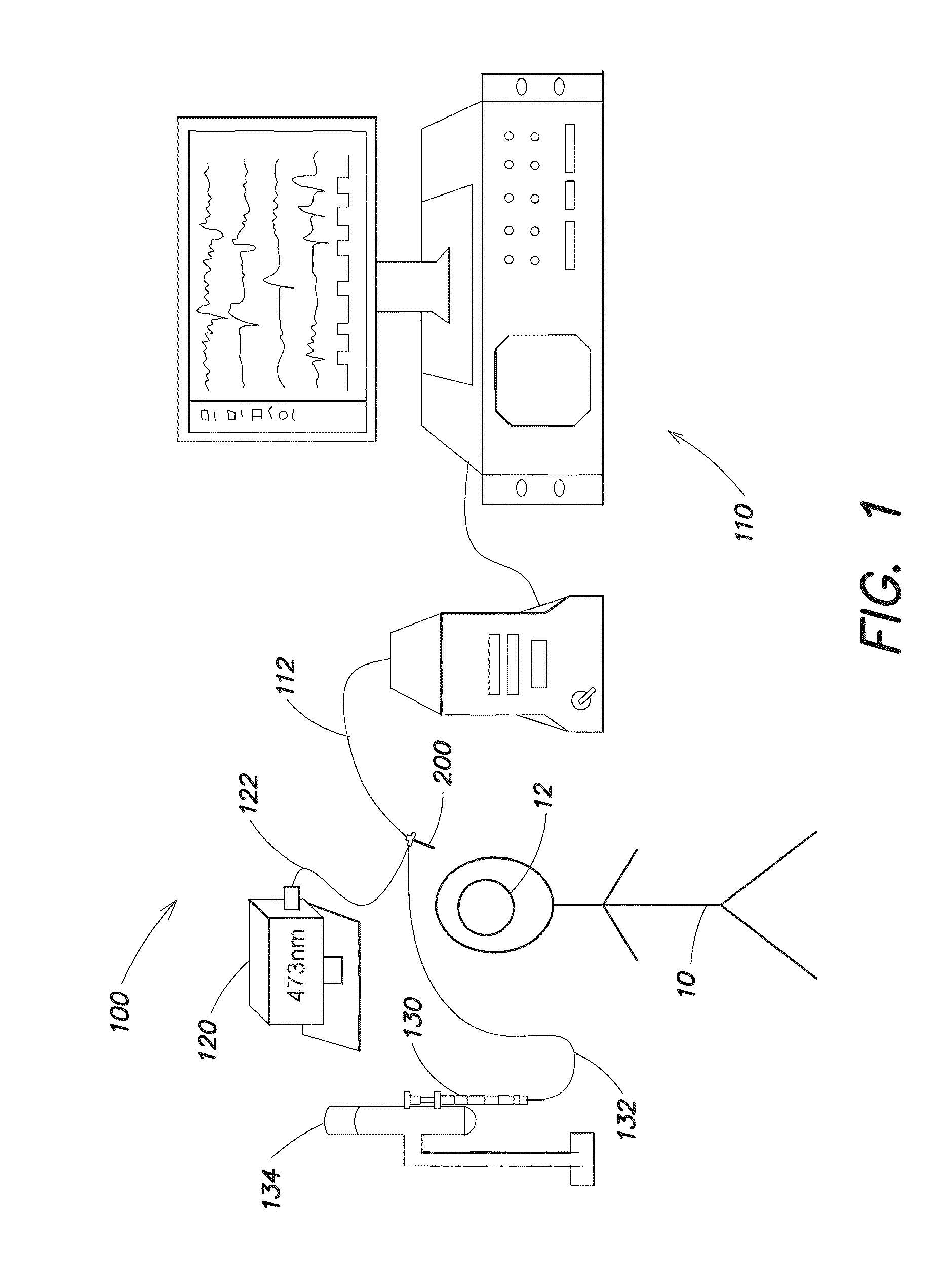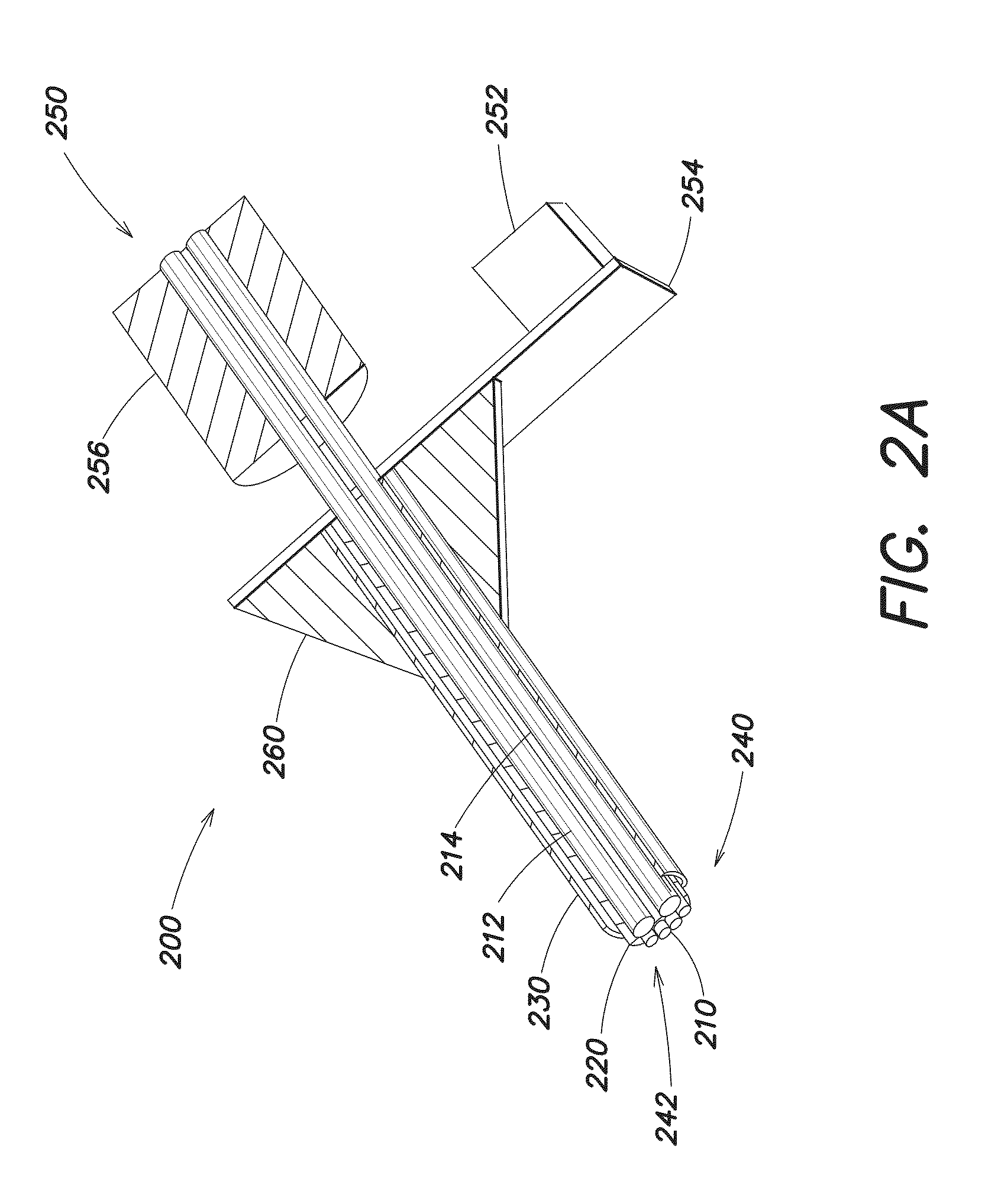Methods and apparatus for stimulating and recording neural activity
a neural activity and neural recording technology, applied in the field of neural activity stimulation and recording methods and apparatuses, can solve the problems of neuronal death, bleeding, neuronal scars, etc., and achieve the effect of reducing the signal-to-noise ratio (snr) and reducing the quality of neural recording
- Summary
- Abstract
- Description
- Claims
- Application Information
AI Technical Summary
Benefits of technology
Problems solved by technology
Method used
Image
Examples
Embodiment Construction
[0051]Embodiments of the present invention include fiber-inspired probes for stimulating and recording neural activity using electrical, optical, and pharmacological interrogation. Exemplary neural probes can be implanted in human patients and animal models to assess and modulate neural activity in the context of diseases such as epilepsy, Parkinson's, Alzheimer's, major depressive disorder, autism spectrum disorders, substance addiction, post-traumatic stress disorder, and traumatic brain injury. They can also be used to research basic principles of brain function, including but not limited to learning and memory processes. Furthermore, an exemplary neural probe can be used in a brain-machine interface to restore motor and cognitive function lost due to limb amputation, locked-in syndrome, paraplegia, or quadriplegia resulting from spinal cord or peripheral nerve injury.
[0052]An exemplary neural probe can be made using a thermal drawing process similar to the drawing processes used...
PUM
 Login to View More
Login to View More Abstract
Description
Claims
Application Information
 Login to View More
Login to View More - R&D
- Intellectual Property
- Life Sciences
- Materials
- Tech Scout
- Unparalleled Data Quality
- Higher Quality Content
- 60% Fewer Hallucinations
Browse by: Latest US Patents, China's latest patents, Technical Efficacy Thesaurus, Application Domain, Technology Topic, Popular Technical Reports.
© 2025 PatSnap. All rights reserved.Legal|Privacy policy|Modern Slavery Act Transparency Statement|Sitemap|About US| Contact US: help@patsnap.com



